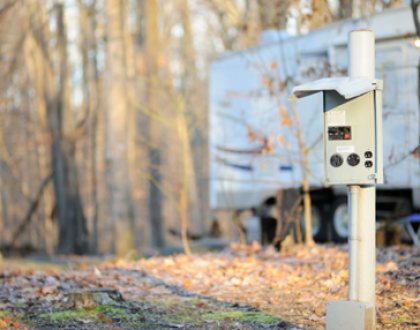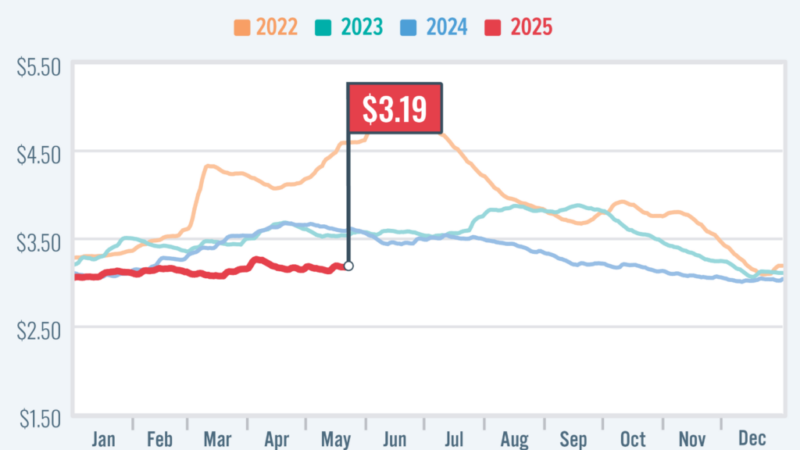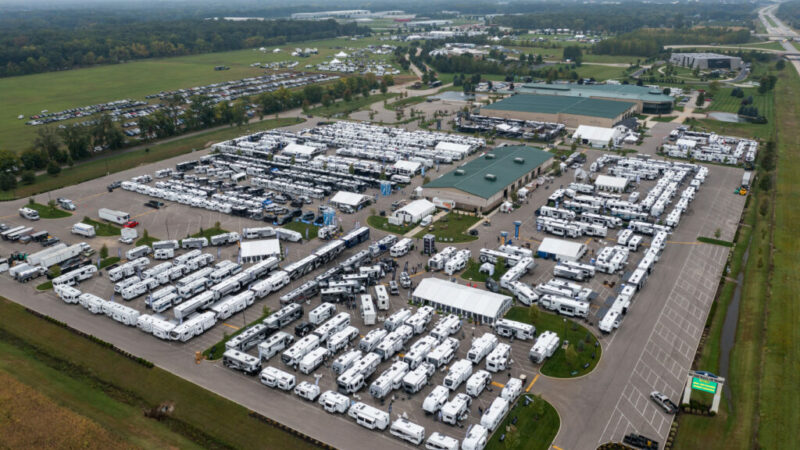Campgrounds Bracing for Ground Monitoring Interrupters – RVBusiness – Breaking RV Industry News

The National Electrical Code (NEC) is constantly evolving to improve electrical safety. In 2026, a significant update impacting RV campgrounds will take effect: the requirement for Ground Monitoring Interrupters (GMI) on RV pedestals, according to a News & Insights report by the RV Industry Association (RVIA).
What are GMIs?
Think of GMIs as advanced safety guards for your electrical connection. When an RV is plugged in, the GMI checks the pedestal’s grounding connection before allowing power into the RV. If it detects a problem, it cuts off power, preventing potentially dangerous electrical hazards.
Why are GMIs Important?
Damaged or misused shore cords (the cables connecting an RV to the pedestal) and pedestal receptacles can pose serious risks. GMIs add a crucial layer of protection by ensuring a solid grounding connection, minimizing the risk of electrical shocks and equipment damage.
What’s Changing and When?
This requirement, introduced in the 2023 NEC, will be enforced starting in the fall of 2026. This gives campground owners time to prepare and upgrade their electrical systems.
How Can Campgrounds Prepare?
- Partner with a qualified electrician: A thorough assessment of your electrical infrastructure is crucial. This includes transformers, distribution panels, breakers, and pedestals.
- Prioritize regular maintenance: Regular inspections and upkeep are essential for safe and reliable power distribution. Testing connections, GFCIs, and inspecting wiring and equipment should be part of a routine maintenance plan.
- Consider environmental factors: Weather conditions can impact your electrical system. Underground systems offer better protection but require more frequent inspections.
- Plan for increased power demands: Modern RVs have growing power needs. Ensure your system can handle the load while maintaining safety.
By proactively addressing these points, campground owners can ensure a smooth transition, meet the new safety standards, and provide a secure and enjoyable experience for their guests.
Need more information? Read the background and fact sheet below.

The National Electrical Code (NEC) is revised and published on a three-year cycle. This means a new edition of the NEC is released every three years, with the most recent changes and updates to electrical safety standards. There is a specific section of the NEC that applies to RVs and RV Parks: Article 551: Recreational Vehicles and Recreational Vehicle Parks.
In the National Electrical Code Publication for 2017 there was a global change in the resulting in RV Pedestal equipment with 30 and/or 50-amp receptacles, required to have GFCI (Ground Fault Circuit Interrupter) protection, along with the 15- and 20-amp receptacles already requiring GFCI’s.
During the code cycle in 2019 a Tentative Interim Amendment was approved to revise and clarify the requirements for the 30- and 50-amp receptacles on the RV pedestal equipment to not require the GFCI protection. These circuits were determined to be feeders, and not just a branch circuit, therefore not requiring GFCI protection. The concern was that the “stacked” GFCI protection required in RV’s along with many appliances, would be enough to result in false tripping of the parks GFCI protection. These would be the GFCI breakers located in the parks distribution system.
Reverse Polarity then evolved into the RV manufacturing portion of the NEC in 2020. This was to continue improvement of safety when using and connecting recreational vehicles to park supplied power. This device was required to be supplied by the RV manufacturers and was checking the polarity of the systems, testing for reversed wiring connections in the RV, or the park pedestal, and possible nearby RVs.
While the 2023 edition was going through revisions, the reverse polarity requirement was removed but replaced with a ground monitor requirement. This came with a delayed enforcement of July 2026. This was largely due in part to important discussions during the committee panel meetings highlighting there wasn’t any existing product in the market that would meet these requirements.
Currently the revision cycle for the 2026 publication of the NEC is nearing completion. The language around the Ground Monitor has continued to change and narrow the focus to a requirement for a Ground Monitoring Interrupter in 2026 of a Type II device. This has not yet been completely reviewed and balloted, therefore changes could still occur between now and publication.
So what is a ‘Ground Monitoring Device’?
A ground monitoring interrupter is a device that will monitor the grounding wire impedance (or ground wire resistance) before allowing power to the vehicle. This device will be testing the electrical supply from the pedestal. It will not allow a connection of the current carrying conductors often referred to as the “hot” and/or “neutral” wires, until a safe grounding connection has been made. These devices are considered personal protection much like ground fault circuit interrupters or GFCIs. If there is incorrect wiring or grounding connection is sensed to be outside expected norms, then no power will be allowed to pass through to the vehicle.
What does a ground monitoring device address?
Concerns with the feeder cord assembly (often referred to as shore cords) connecting the RV to the pedestal at the park is primarily where requirements have come into play. Damage and misuse of cords and connections can lead to electrical hazards.
RVs require the neutral buss bar and ground bar to be unbonded from each other, or floating. There can only be one grounding point in distributed electrical systems. Therefore, when RVs plug into the campground pedestal the bonding of the neutral conductor and ground are performed externally as part of the RV parks grounded system. Individuals utilizing the park campground pedestals for power to their RVs rely on safe and reliable distributed power, which includes the grounding of their electrical systems for safety.
When will the new requirement go into effect?
Often the adoption of the current NFPA standard publication of the national electrical code occurs in May of a calendar year, in this case 2026, and enforcement of the requirement will begin in the Fall of that year, in this case again in 2026.
What can campgrounds do to prepare for these new requirements?
Changes and adapting to future technology and requirements are necessary in maintaining efficient and reliable power supply in campgrounds.
Components within park distributed power include but are not limited to transformers, distribution panels, circuit breakers, pedestals, GFCI outlets, and general outlet and electrical equipment. Park owners can work with electrical contractors to review the needs and maintenance schedules of their property. Regular upkeep and maintenance are necessary to continue to provide safe and functional electrical power distribution.
Having the existing information to provide contractors such as location and number of campsites with electrical power requirements would be helpful. Original design specifications such as the estimated load requirements the park was originally designed for, along with any upgrades/changes made could also be helpful information to have on hand. Proper grounding is crucial in campground electrical distribution to protect the equipment and campers. All equipment should be properly maintained and inspected to ensure a safe and consistent supply of power.
Having a maintenance/inspection plan for potential risk along with a mitigation plan would be a great tool to have in place for all park owners. During maintenance and inspections by electrical contractors they can test connections to ensure stability and integrity of the system. The environmental conditions of parks have effects on the system due to winds, moisture, and extreme temperatures. Other differences in park designs may include underground systems which provide better protection from the environment but would require more regular inspections to prevent malfunctions and identify potential issues before they become a hazard.
During regular maintenance and inspections, it may be recommended to perform load tests, ground fault circuit interrupter testing, visual inspections of connections, damaged wiring, equipment and outlet wear, including power pedestals. This would include testing of proper grounding. It is important to ensure safe operation and distribution of electricity.






